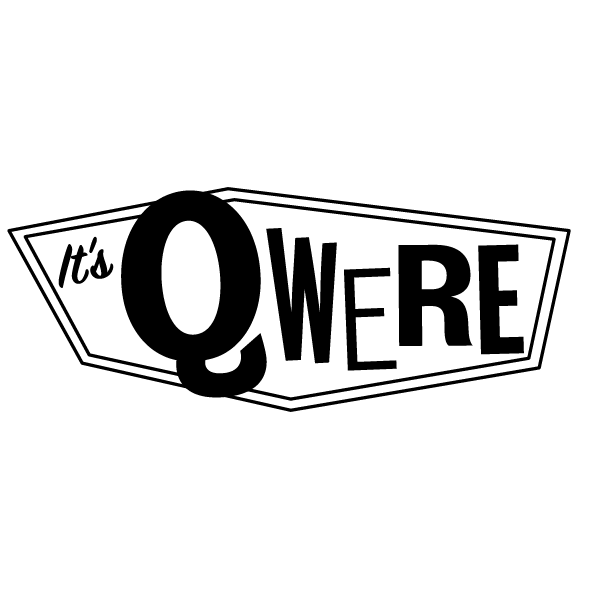Illustrations by Aaron Gonzalez
I recently heard the 70s disco hit “Mighty Real” for the first time with new ears.
The thumping bassline, Sylvester’s unmatched vocal ability, and the Two Tons o’ Fun wailing behind him … just thinking about it makes me wanna shake my ass. Then I imagined this party: a room of mixed-gender queers and allies of various colors and ethnic cultures, all dancing to the beat of the disco heat.
If ever there were a more gender-bending pop diva than Sylvester, point them back in the direction from which they came to take notes. Before Boy George, Prince, and Grace Jones, Sylvester blurred gender lines while insisting to be seen simply as himself; so much so that record companies had difficulty marketing him.
“What did you say when your family found out you were gonna be drag queen?” Joan Rivers asked during his appearance on The Tonight Show in 1986. Clad in a teased-to-the-Gods strawberry-blonde wig, glittering wrists and fingers full of jewelry, and an angular black suit — one lapel bedazzled beyond every star in the collective galaxy — he proclaimed, “I’m not a drag queen, I’m Sylvester!”
"When I was little, I used to dress up, right? And my mother said, 'You can't dress up,'" Sylvester continued during the interview. "'You gotta wear these pants and these shoes. And you have to, like, drink beer and play football.' And I said, 'No I don't!' And she said, 'You're very strange.' And I said, 'That's OK!'"
He was ahead of his time then — and possibly ahead of the times even now.
Forty years after its release, “Mighty Real” can still be an anthem for us all in the LGBTQ journey today. The recent groundbreaking, unanimous decision of India’s top court to overturn a colonial-era ban on consensual gay sex was a welcome affirmation of human dignity. But as the White House administration threatens the livelihood of our American LGBTQ family yet again, it’s now more important than ever to “feel real.”
According to The New York Times, the Department of Health and Human Services is leading "an effort to establish a legal definition of sex under Title IX, the federal civil rights law that bans gender discrimination in education programs that receive government financial assistance." Such an approach would make the determination "on a biological basis that [a legal definition of gender] is clear, grounded in science, objective and administrable."
As to "science," CNN’s Tim Holbrook writes, it is abundantly clear there has never been a true gender binary -- just male and female -- in nature. Culturally, humans have never fallen neatly into the gender binary. Other cultures have various forms of non-binary genders. For example, Tahitian culture embraces the mahu, people of uncertain gender. Some Native American cultures embraced two-spirit people. Both Thai and Indian cultures have recognized non-binary genders. This is not to say that such non-binary genders have been fully embraced, but they are recognized, in parts of the United States as well as elsewhere.
We can’t let the fear-mongering patriarchy shut us out and erase our experience. Obviously, it’s up to us to tell our own stories with blunt accuracy, create our own inclusive spaces, and light our own paths to success. How you lend your voice to the revolution is up to you. What matters is that we keep moving forward empowering ethnic queers to live authentic, visible lives without fear of judgement or prosecution.
HEAR+QWERE was born out of my curiosity. As “diversity” becomes an industry buzzword, I couldn’t help wondering about experiences of the full spectrum of LGBTQ folks. I myself — a black, cis, gay male — am only a fraction of the spectrum and I wanted to hear from my peers.
This year on April 25 in San Francisco, we hosted the first conversation salon discussing our experiences as people of color navigating culture and media. We shared stories of religious upbringings, gendering, fetishization, dating apps, chosen family, and self-discovery. By the end of that first evening, we all resolved that this type of open forum is a necessary step towards unity and understanding within our own community.
I took the conversation to the Leslie-Lohman Museum of Gay and Lesbian Art in New York City where we unpacked the distaste for Hollywood’s interpretation of queer romance. “When it comes to our stories, we should be the ones to tell them,” said an attendee, calling action against studio executives. “Call Me By Your Name is about the fetishization of straight white men playing queer roles. Why are we clapping for that?”
In Istanbul with LGBTI+ organization SPoD, I remember a young lady came to the salon after having moved there just five days prior form a tiny conservative town in Greece. She was coy and cautious; mostly only listening. I never found out why she came and if she even identified on the queer spectrum; it didn’t matter.
From the first H+Q conversation to the Mighty Real event to the design of our Qwarterly publication, each step forward has happened organically with the community in mind. I want to keep that energy with us as we host more conversations (Bonjour, Paris!) and expand the H+Q experience.
As queer people, we are constantly challenged with expressing ourselves authentically versus conforming to societal standards … whatever that means these days. Instead of putting people into boxes based on your perception of their experience, let’s start by treating one another simply as humans. By allowing someone to reveal themselves to you, you’ll end up finding shapes you could’ve never imagined.
Now, we dance.





